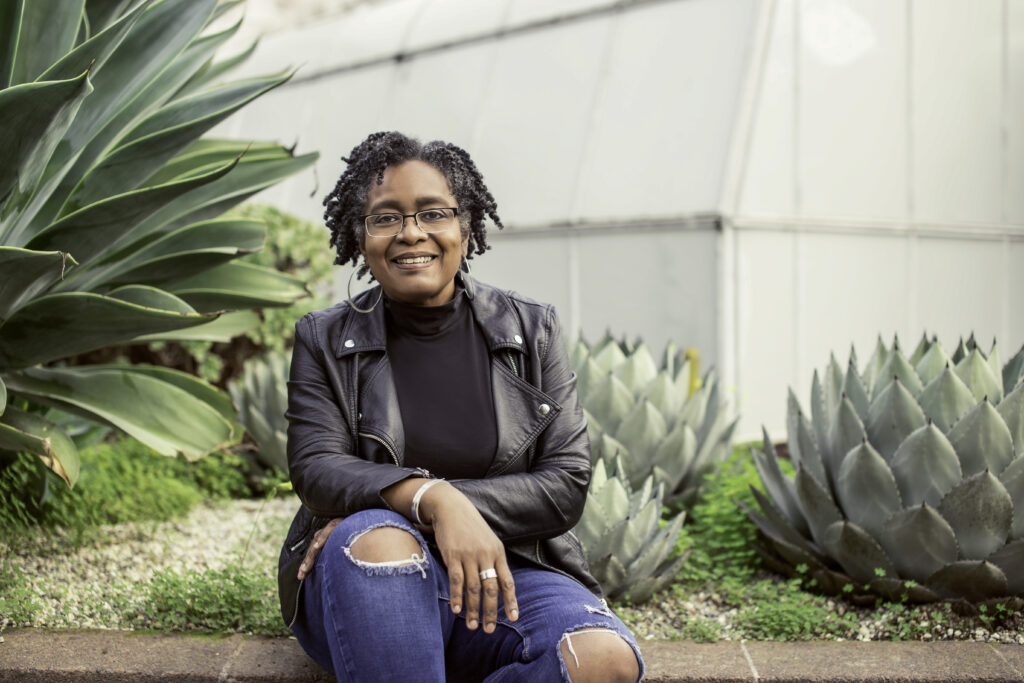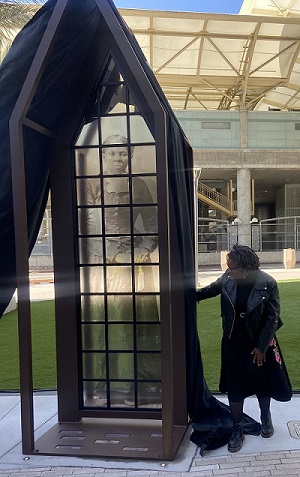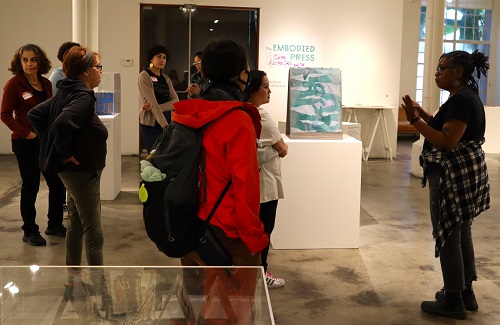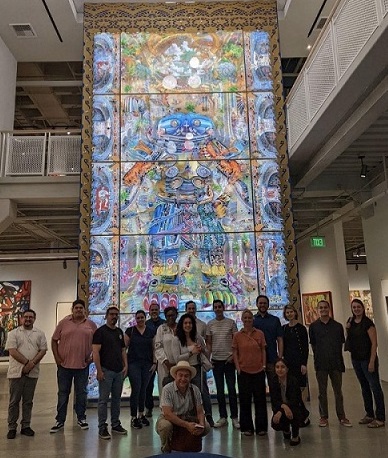By Dhawal Kataria, AICP, RSP, Associate Editor, July 23, 2024
Cheryl Derricotte is a visual artist whose favorite mediums are glass, paper and textiles. Originally from Washington, DC, she lives and makes art in San Francisco, CA. Her art has been featured in the New York Times, The Guardian, the San Francisco Chronicle, MerciSF, and the San Francisco Business Times. In 2021, she was awarded a commission to develop a monument to Harriet Tubman at the transit-oriented development Gateway at Millbrae Station, the first sculptural tribute to the abolitionist in glass. Entitled “Freedom’s Threshold,” the monument was unveiled on March 16, 2023.

Photo Credit: Nye’ Lyn Tho
Her works are in the permanent collections of the Museum of Glass, the de Young Museum, the Historic New Orleans Collection, the Oakland Museum of California, the San Francisco Public Library, and the National Association of Homebuilders. Cheryl holds a B.A. in Urban Affairs (Minor: History), Barnard College, Columbia University; a Master of Regional Planning, Cornell University; and a Master of Fine Arts, California Institute of Integral Studies. Since 2021, she has served as the Professional Development Officer of the American Planning Association’s new Arts & Planning Division.
Tell us about your current work and how you got started.

I’ve always been an artist and enjoyed construction from a young age. My interest in urbanism and cities grew during college in New York City. I became an activist focusing on affordable housing, particularly around Columbia University’s campus in Harlem. I now primarily create public art and exhibitions. Currently, I’m a municipal artist-in-residence at the City of Berkeley through a partnership with Kala Art Institute, and I also manage projects for tech companies building creative workspaces. Previously, I worked on affordable housing and community-based art facilities for nonprofits.
Freedom’s Threshold, unveiling by Cheryl at Millbrae Station; Photo Credit: Robina Riccitiello
How important is it to integrate art into planning, and why is it often considered an afterthought?
Art allows us to engage with societal issues beyond mere beautification. In healthcare, for example, art enhances the experience for staff, patients, and visitors and offers therapeutic activities for patients. Integrating art into planning processes provides a holistic experience, especially for a profession deeply concerned about community engagement.
Tell us more about the municipal artist-in-residence for the City of Berkeley’s Climate Equity Pilot Program?
It is a collaboration between the City of Berkeley and the Kala Art Institute focusing on planning issues related to the San Pablo corridor and Climate Equity that began about 12 years ago. Kala conducts an application process every couple of years. I am one of two municipal artists in residence working on Berkeley’s climate equity pilot program, which includes projects on e-bikes, coalition-building, and home electrification. My role involves community engagement with residents participating in these projects.

Cheryl conducting E-Bike engagement at Kala Arts Institute; Photo Credit: Kelly Vernon
What advice would you give to other communities considering similar programs?
Identify a long-term, active nonprofit arts partner in the community. If possible, involve a university planning program. Secure funding for artists and community engagement activities. Clearly define project goals to ensure meaningful engagement beyond traditional meetings.
Are there federal grants or funding sources available for placemaking or art installations?
The National Endowment for the Arts offers competitive grants. Cities can also access funds from larger federal agencies like the Department of Energy or HUD, depending on the project.
Please tell us more about APA’s Arts and Planning Division (APD).
We offer continuing education programs, policy work, and collaborations with other divisions. Examples include cultural roundtables, partnerships on projects such as monuments, murals, and installations, and field trips like the one to the Cheech Marin Collection of Latino art.

Arts and Planning Division and Latinos in Planning Division Members at Cheech Marin Collection of Latino Art; Photo Credit: Cheryl Derricotte
What advice do you have for young planners or artists?
For planners, identify the aspect of planning that excites you and seek exposure to different aspects/roles within that field. For artists, persistence is key. Keep applying for shows and grants despite the common reality of persistent rejections. Like planners, understand which area of the art world interests you and build your career around it.
Any books or podcasts that have inspired you?
I recommend Steven Pressfield’s books The War of Art and Turning Pro for their insights on overcoming resistance. I also enjoy Drawing, Well Being and the Exploration of Everyday Place, by Dr. Nicole Porter, which combines reflections on landscape architecture, planning practice, and mindfulness.
What do you do in your free time?
I love watching movies and attending community events that combine different professions, like interior design showcases. I also enjoy exploring neighborhoods and cities and engaging with local cultural activities.
About the Author

Interviewer Dhawal Kataria, AICP, RSP, is a senior planner at Kittelson & Associates and an Associate Editor for Northern News. All interviews are edited.
